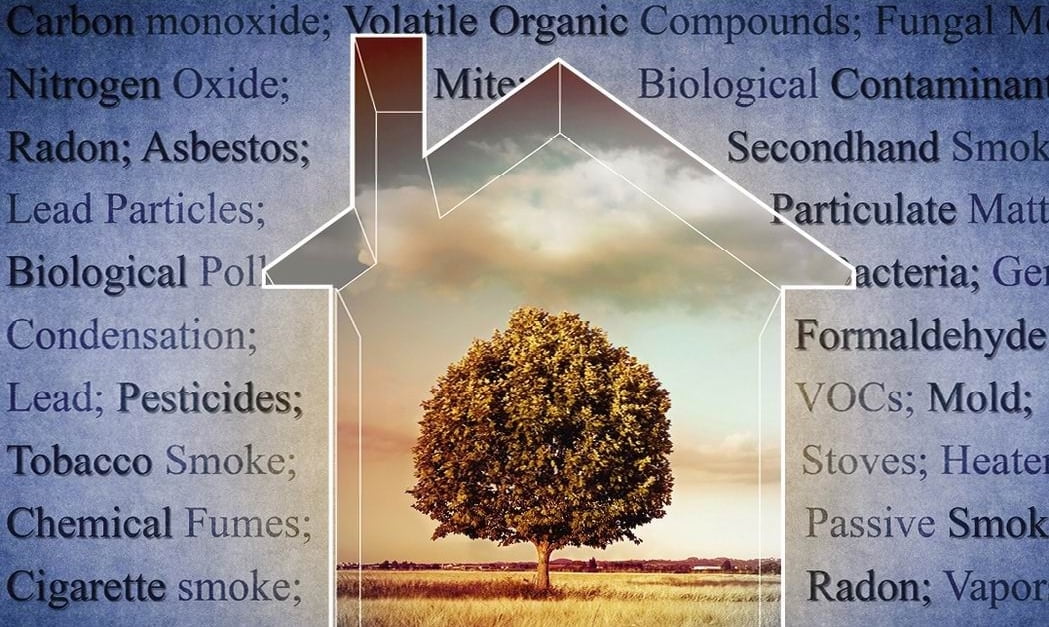As a homeowner, how aware are you of indoor air pollution? It’s an important thing to consider, and even more so if you’re planning to renovate or build. This is the time to start a conversation with your contractor to ensure, when selecting materials, they are considering your indoor air quality.
Make sure they choose low-VOC (volatile organic compound) materials, and that radon testing is done. Be wary of fibrous materials such as carpets, because they can trap dust and release VOCs over time.
We Canadians spend roughly 90 per cent of our time indoors. When you think that indoor air can be two to five times more contaminated than outdoor air, the impact on our health can be substantial, according to Health Canada.
Here’s a look at some common forms of indoor air contamination.
Radon
Radon gas migrates from the soil into the basement of homes and is considered to be a risk to the building’s occupants.
Information from Health Canada reveals that 16 per cent of lung cancer is caused by radon exposure, making it the second-leading cause of lung cancer in Canada. Also, seven per cent of Canadian households have radon levels high enough to be considered a health risk.
Since radon is undetectable by human senses, the only way to measure radon levels is through radon testing.
Health Canada states that radon is unsafe if found in concentrations higher than 200 Bq/m3. If radon testing shows your home has higher levels of radon than this, get in contact with a contractor to begin implementing radon venting strategies.
VOCs
VOCs are chemicals found in everyday products that have the potential to change into a gas form and contaminate indoor air. This is known as off-gassing. VOCs can be found in many household products such as paints, vinyl, adhesives, cleaning products, computers and more. The “new car” smell that most people are familiar with is actually a sign that materials are off-gassing into the surrounding air.
In recent years, off-gassing of materials has become more widely understood and most materials now have a no-VOC or low-VOC equivalent. For example, paints are a major source of VOCs; but with growing awareness, virtually all paint manufacturers now offer no-VOC or low-VOC paint lines.
There are also third-party verifications for VOC levels in most products. Try looking for Greenguard or EcoLogo certification on products you purchase.
Ventilation
Ventilation is the key to improving indoor air quality in existing homes. The building enclosure can trap contaminants within the building, and proper ventilation will flush these contaminants outdoors.
Natural ventilation through opening windows can help — but with Ottawa’s climate, this solution is not practical for the majority of the year.
Installing a heat recovery ventilator (HRV) or energy recovery ventilator (ERV) will reduce energy consumption when compared to a conventional exhaust fan.
Running your furnace fan and HRV/ERV 24/7 will increase the amount of fresh air entering your home and improve your home’s indoor air quality. Also, the constant movement of air will provide a more uniform temperature in your home. Constantly running your furnace fan will cost slightly more energy but is worth the advantage of improved indoor air quality and thermal comfort.
Additionally, installing a new air filter in your HVAC equipment will help flush out contaminants in the air. MERV 13 filters can be retrofitted to the majority of HVAC equipment.
Humidity
Moisture from humidity can build up in materials such as wood, furniture, or any other materials that can absorb water. Once wood becomes damp, there is the potential for mould growth. The best practice to reduce the chances of mould growth is to keep indoor humidity levels below 50 per cent.
If you suspect or see any mould growth, contact a contractor to go forward with testing and remediation measures.
Plants
Plants naturally clean and freshen air by removing carbon dioxide and releasing oxygen. Plants can also remove many common indoor air pollutants. NASA’s Clean Air Study provides a list of plants that reduce levels of various indoor air pollutants.
What can you do if you’re not planning a renovation just yet? Bring greenery such as English Ivy, Aloe Vera, and Peace Lily (only three of many air-purifying plants) into your home, run the furnace fan 24/7, and upgrade your air filter. Every bit helps. Your health is your wealth.
Editor’s note: This article is reprinted with permission from the spring 2020 issue of Ottawa Renovates magazine.





